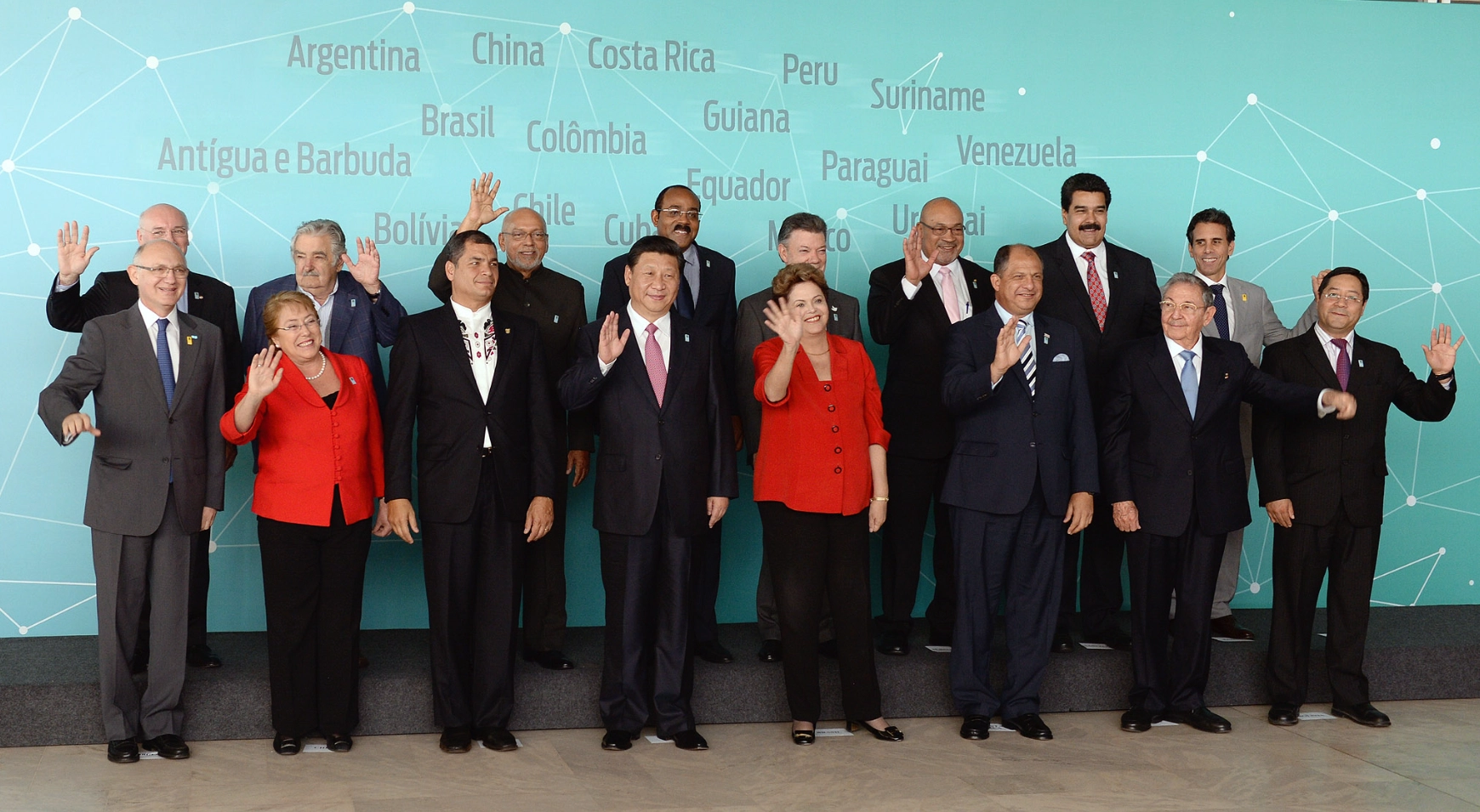Relations between China and Latin America have become increasingly relevant since the beginning of the 21st century. This phenomenon has occurred in a context of profound transformations in the international order, characterized by the rise of China in the international geo-structure and the implementation of the Belt and Road Initiative (BRI). But how has the relationship between Latin America and China evolved through the China-CELAC Forum, considering its background, institutional structure and historical milestones?
The trajectory of rapprochement between Latin America and China
Since its establishment in 2010, the Community of Latin American and Caribbean States (CELAC) has played a key role as a leader in the regional integration process. However, this dynamic was affected from 2017 onwards due to internal divisions and lack of consensus, leading to a standstill between 2018 and 2020. This situation was aggravated by the Bolsonaro government’s decision to suspend Brazil’s participation in the organization at the beginning of 2020, which generated a period of uncertainty for Latin American regional integration.
The reactivation of CELAC took place in 2020 under the Pro Tempore Presidency of Mexico, a country that managed to convene virtually, due to the COVID-19 pandemic, both the XXIX Meeting of CELAC National Coordinating Bodies (on September 22) and the XX Meeting of Foreign Ministers (on September 24), both events within the framework of the 75th Session of the United Nations General Assembly. The full reactivation of CELAC materialized with the holding of the VI CELAC Summit, held in Mexico City on September 18, 2021.
For its part, China has maintained an active strategy towards Latin America since the 1990s, with then President Jiang Zemin (1993-2003) as one of its main promoters. Although substantial progress in this relationship was achieved later, during the government of Hu Jintao (2003-2013). First, in 2008, with the publication of “China’s Policy Paper on Latin America and the Caribbean” (known as the 2008 White Paper); and then, in 2012, when the then Premier of China Wen Jiabao delivered a speech at the ECLAC offices in Santiago, Chile. This speech not only significantly boosted the relationship, but also materialized the guidelines outlined in the White Paper.
Among the initiatives mentioned by Wen Jiabao in 2012 was the creation of a China-Latin America and the Caribbean Cooperation Fund, aimed at boosting cooperation in various sectors, together with the granting of a special US$10 billion credit line to promote the construction of key infrastructure, such as railroads, roads, ports, power plants and telecommunications networks in the region.
Still, particularly relevant was the proposal to establish a China-Latin America and the Caribbean Cooperation Forum, which would serve as a platform to institutionalize and strengthen ties between the two sides. Continuing with the will expressed by previous governments, the China-CELAC Forum proposal finally materialized on July 17, 2014, when President Xi Jinping, attended the meeting of China-Latin American and Caribbean leaders in Brasília. At this historic meeting, the official inauguration of the China-CELAC Forum was announced and the first meeting of Foreign Ministers was convened, which was held in Beijing.
The institutional structure of the China-CELAC Forum
The China-CELAC Forum is distinguished by its simple intergovernmental institutionality, but provides a framework for dialogue and cooperation between China and the countries of Latin America and the Caribbean. At the highest level is the Ministerial Meeting, which brings together the Foreign Ministers of the CELAC countries and China. This meeting has been held on three occasions, with the last one in Mexico in December 2021. These meetings have marked key moments, as they have not only allowed participating countries to coordinate their efforts and define common strategies to address regional and global challenges, but have also been essential to define the agenda and explore new opportunities for cooperation.
The following is presented as a more dynamic and compact coordination instance, the mechanism of the Dialogue between Ministers of Foreign Affairs of China and the Quartet of the Community of Latin American and Caribbean States (CELAC). It is important to note that the CELAC Quartet is composed of the previous Pro Tempore Presidency (PPT), the current PPT, the incoming PPT and the CARICOM PPT. This dialogue mechanism plays a fundamental role in the coordination of common policies and strategies, promoting coherence and effectiveness in the relationship between both parties.
Next is the National Coordinators’ Meeting, which plays a crucial role in the functioning of the ministerial meetings, as it is where the logistical details are prepared and the agreements reached by the leaders are followed up. Convened at least once a year, this meeting seeks to ensure effective coordination and smooth implementation of the agreements reached.
In addition to these instances of political coordination, various thematic sub-forums have been created within the framework of the China-CELAC Forum, focusing on specific areas of interest to both China and Latin America, such as agriculture, scientific-technological innovation, and business, among others. These sub-forums have facilitated a more detailed and specialized dynamic of key aspects of bilateral cooperation.
Milestones in the historical evolution of the China-CELAC Forum
The historical evolution of the China-CELAC Forum has witnessed significant milestones in the relationship between China and the countries of Latin America and the Caribbean, which have materialized in the Foreign Ministers’ Meetings, which represent the highest authority within the forum. At its first ministerial meeting in January 2015, the Forum outlined cooperation based on principles of flexibility and voluntary participation. In this context, the Beijing Declaration was established and the 2015-2019 Cooperation Plan was agreed upon, which outlined ambitious objectives to strengthen trade and investment between both parties over the next five years.
The second ministerial meeting, held in Santiago, Chile in January 2018, further consolidated this partnership through the Santiago Declaration and the adoption of the 2019-2021 Action Plan. This plan reflected the commitment of both parties to promote sustainable development in the region, taking advantage of the opportunities presented by China’s “Belt and Road” initiative.
The third ministerial meeting, held virtually in December 2021 due to the COVID-19 pandemic, resulted in a joint declaration and the adoption of the 2022-2024 Action Plan. This plan represents the most recent step in cooperation between the two sides, with a renewed focus on areas such as politics and security, economic cooperation, science and technology, high-quality infrastructure, and social and cultural cooperation, among others.
Perspectives towards the future
The China-CELAC Forum has established itself as an essential mechanism for fostering cooperation between China and Latin America, highlighting its institutional flexibility and its focus on the needs of each party. Throughout its three ministerial meetings, it has developed a robust agenda aimed at promoting dialogue, collaboration, and exchange in various areas of mutual interest. Yet, the last historic milestone of the China-CELAC Forum took place in 2021, which poses the challenge of further strengthening this partnership.
In this regard, it is crucial to recognize that the third edition of the White Paper on Latin America could soon be published, outlining China’s guidelines and objectives in its relationship with the region. In addition, the Fourth Meeting of Ministers of the China-CELAC Forum is expected to be held in China, giving this country a more prominent role in shaping the bilateral agenda.
Finally, it is anticipated that a new action plan will be issued to cover the period from 2025 to at least 2027, in order to guide and structure cooperation between China and Latin America in the years to come.
* This text was originally published on the REDCAEM website.
Translated from Spanish by Micaela Machado Rodrigues












